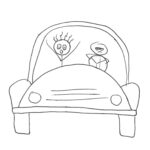Dr Norman
Claringbull
Psychotherapist
Counsellor
Psychologist
The Friendly Therapist
Call now for a free initial telephone consultation
Total confidentiality assured
In-person or video-link appointments
Private health insurances accepted
Phone: 07788-919-797 or 023-80-842665
PhD (D. Psychotherapy); MSc (Counselling); MA (Mental Health); BSc (Psychology)
BACP Senior Accredited Practitioner; UKRC Registered; Prof Standards Authority Registered
Blog Post – December 2014
Posted on November 30th, 2014
BEATING ANXIETY: Part 3:
Unfortunately, sometimes our anxiety and fear levels are so deeply entrenched, and so overwhelmingly incapacitating, that simply managing them, (see last month’s Blog), is not enough. For instance, somebody might be so frightened or so uncomfortable about being in an enclosed space that using a lift or travelling on an aircraft might be an impossibility. Someone else might be so excessively fearful of heights that even standing on a low stool is beyond them.  Of course the degree to which any fear or phobia interferes with a sufferer’s life depends on circumstances. So, for example, an overwhelming level of anxiety about eating in public might not trouble a recluse but it would certainly incapacitate a restaurant critic. There are many, many, kinds of fears, worries, and phobias that have the potential to impact on our lives in all sorts of damaging ways. In some of these cases, simply containing or managing the problem might not be enough. It needs to be eradicated, or at least reduced, to tolerable proportions. Fortunately, many of these more deeply embedded, more debilitating anxiety states respond well to a psychological treatment method known as ‘Desensitisation’.
Of course the degree to which any fear or phobia interferes with a sufferer’s life depends on circumstances. So, for example, an overwhelming level of anxiety about eating in public might not trouble a recluse but it would certainly incapacitate a restaurant critic. There are many, many, kinds of fears, worries, and phobias that have the potential to impact on our lives in all sorts of damaging ways. In some of these cases, simply containing or managing the problem might not be enough. It needs to be eradicated, or at least reduced, to tolerable proportions. Fortunately, many of these more deeply embedded, more debilitating anxiety states respond well to a psychological treatment method known as ‘Desensitisation’.
Important note: Desensitisation is not a recommended treatment for the anxiety condition known as Obsessive-Compulsive Disorder. Incorrectly applied Cognitive-Behavioural Therapy techniques, (including Desensitisation), can actually exacerbate OCD symptoms.
I can probably show you best how Desensitisation works with an illustrative, (anonymised), case study. This is Mary’s story:
Mary was the front seat passenger in a car that was being driven by her friend Jane. They had just left Mary’s house and were on their way to the local sports centre to play basketball. Both women were keen club players in the County League. For some unknown reason, Jane lost control of her vehicle and it crashed into the verge. The car ended up impaled on a low hanging branch of a very large tree. This branch, acting like a giant spear, had penetrated the car through the front screen. It would have skewered Mary too had Jane’s car not come to a halt just in the nick of time. Jane herself was unharmed and clambered out safely but the Fire Brigade had a difficult job freeing Mary. All the time the firefighters were struggling to get her out, Mary was terrified that the car might slip forward and that the ‘spear’ might kill her. She knew that she was in real danger and that her life was being seriously threatened. As a result of her terrifying experience Mary developed a phobia about car travel – she was unable to even consider just sitting in a car. Whenever she tried to do so she experienced an extreme panic attack. This inability to travel by car seriously impacted on Mary’s life generally and made it very difficult, even impossible for her to get to work, go into town, travel to basketball matches, and so on. The potential long-term consequences for Mary’s career, social life, sporting life, indeed for her life generally, didn’t bear thinking about. She needed help and she needed it fast.
Mary and her therapist discussed the various psychological treatment options available. Together they decided that the method known as ‘Hierarchical Desensitisation’ might be their ‘treatment of choice’. This is what they did:
